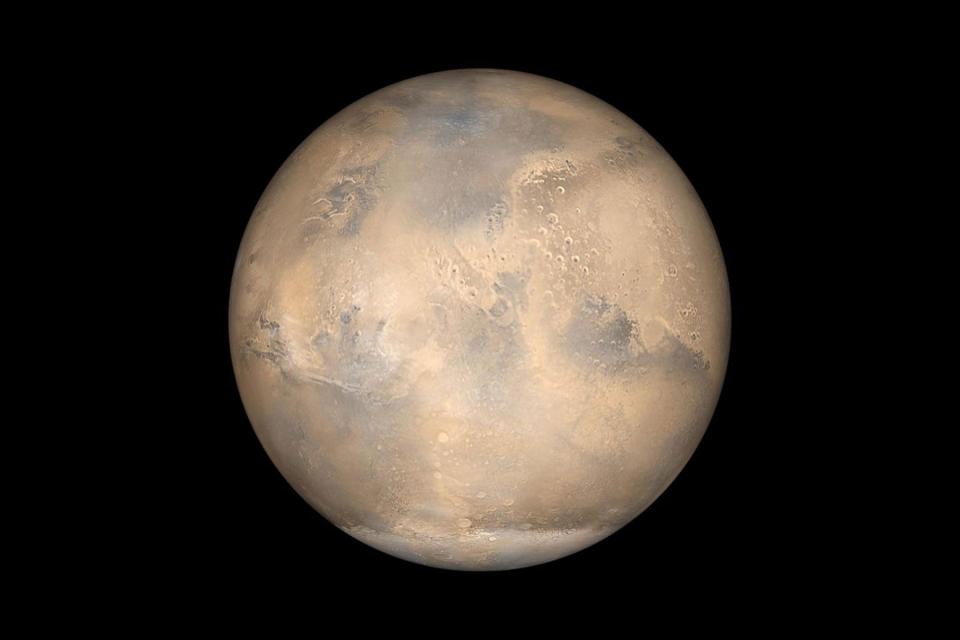You Can See Mars in Opposition Tonight— and the Next Time Won't Be Until 2025
There's no better time to see mars then tonight — here's why.

NASA/JPL/MSSS
This is shaping up to be not only a pretty busy month for stargazers, but a pretty busy night. On Wednesday (the evening of Dec. 7 into the morning of Dec. 8), we'll be able to see a very special eclipse — the lunar occultation of Mars — and Mars will also be at opposition.
The lunar occultation of Mars occurs when the moon passes between the Earth and Mars, obscuring our view of the Red Planet. On Wednesday night, that'll happen about an hour after sunset across North America, according to Space.com.
The moon will be in the constellation Taurus in the eastern sky — you should be able to see Mars just to the left or lower left of it after sunset, per Sky & Telescope. Then, over the course of a few minutes to an hour, depending on your location, Mars will appear to travel behind the moon, emerging on the right side. It's also worth mentioning that the moon is full tonight — the appropriately named Cold Moon — providing a pretty special show.
And that's not the only thing going on in the sky tonight. Mars is also at opposition, which means that the sun, the Earth, and Mars are arranged in a perfect 180-degree line. This happens once every 26 months or so; the next opposition will occur in January 2025. On top of that, Mars just reached perihelion, or its closest point to Earth in its orbit, a week ago, meaning it's still relatively close by. (That is, about 51 million miles away.)
Finally, Mars will also be at its highest point in the night sky at opposition in 10 years, per Astronomy Magazine, making for some easy viewing through a telescope — you don't have to worry about any obstructions blocking your view near the horizon.
In a nutshell, there's no better time to buy a telescope or binoculars to take a peek at Mars — but hurry to your nearest store to pick it up for the show. That said, you'll still be able to see Mars with the naked eye.
And if the weather isn't favorable where you are, you can tune into live streams hosted by Los Angeles' Griffith Observatory or one jointly hosted by Texas' McDonald Observatory and Arizona's Lowell Observatory.
For more Travel & Leisure news, make sure to sign up for our newsletter!
Read the original article on Travel & Leisure.

